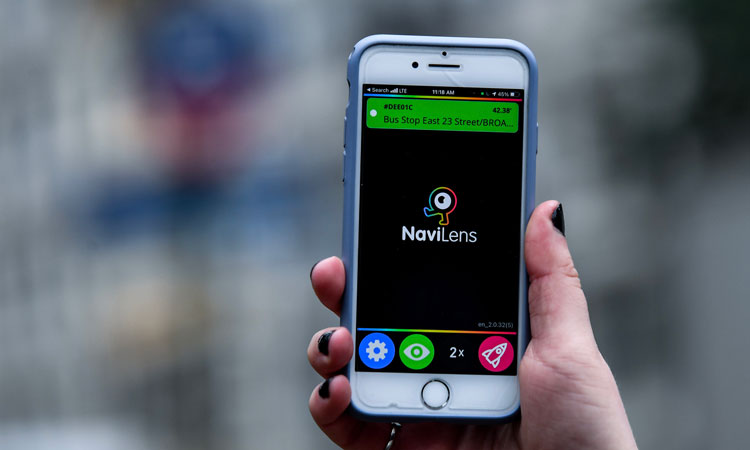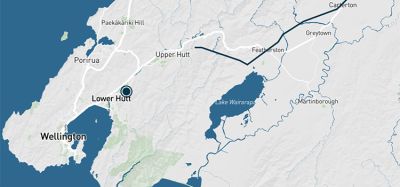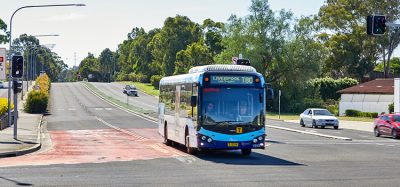MTA pilots smartphone app to help blind and low-vision bus riders
- Like
- Digg
- Del
- Tumblr
- VKontakte
- Buffer
- Love This
- Odnoklassniki
- Meneame
- Blogger
- Amazon
- Yahoo Mail
- Gmail
- AOL
- Newsvine
- HackerNews
- Evernote
- MySpace
- Mail.ru
- Viadeo
- Line
- Comments
- Yummly
- SMS
- Viber
- Telegram
- Subscribe
- Skype
- Facebook Messenger
- Kakao
- LiveJournal
- Yammer
- Edgar
- Fintel
- Mix
- Instapaper
- Copy Link
Posted: 29 October 2020 | Intelligent Transport | No comments yet
The NaviLens app uses a cutting-edge algorithm to translate visual signage into audio and allows customers to determine the accurate location and distance to the nearest bus stop.


The Metropolitan Transportation Authority (MTA) and the Transit Innovation Partnership have launched a pilot program that allows blind and low-vision bus riders to use their smartphones to find bus stops and learn of arrival times.
With assistance from the New York City Department of Transportation (NYCDOT), signs along the M23 SBS bus route display decals that allow for use of a new app.
The NaviLens app uses a cutting-edge algorithm to translate visual signage into audio and allows customers to determine the accurate location and distance to the nearest bus stop, find out when the next bus will arrive, know how crowded the bus is (if the necessary sensor technology is onboard), and be directed onto the bus when it pulls up to the stop.
Colourful, next generation QR-style unique seven-inch-tall codes are installed on bus stop poles that the app can detect from up to 40 feet away and at an angle of up to 160 degrees. The code does not have to be in focus for app detection and will direct the user by providing audio directional cues including distance and angle from code such as “25 feet away, straight,” “right,” etc., solving the ‘last-few-yards wayfinding problem’ for the blind in which GPS technology does not guide to a destination’s exact location.


The M23 SBS bus route is a popular route, carrying almost 14,500 weekday riders before the coronavirus pandemic. It is the eighth busiest bus route in Manhattan with stops near the Selis Manor Residence for the Blind, VISIONS Services for the Blind and Visually Impaired, and Andrew Heiskell Braille and Talking Book Library.
“Accessibility is a key priority for the bus system and MTA family. This app pilot is another way to help bus riders who rely on audio cues and signals to guide them,” commented Craig Cipriano, President of MTA Bus and SVP of the NYCT Dept of Buses. “I want to thank our partners at Transit Tech Lab, NaviLens and DOT for realising that accessibility for bus riders begins at the bus stop.”
NaviLens was one of nine start-up companies selected as part of the 2020 Transit Tech Lab, which called for private sector innovations to improve public transit accessibility. The Lab is a program of the Transit Innovation Partnership, a public-private initiative created by the MTA and Partnership for New York City in response to Governor Andrew M. Cuomo’s call for private sector innovation to improve and modernise public transit.
Over the course of the year-long Transit Tech Lab pilot, dedicated focus groups will test NaviLens periodically with New York City Transit’s Systemwide Accessibility team and the Transit Innovation Partnership. This feedback will be leveraged into updates and changes to the app functionality as well as code implementation along the M23 bus route, with the help of NYCDOT.
Related topics
Accessibility, Passenger Accessibility, Passenger Experience, Vehicle & Passenger Safety
Related modes
Bus & Coach
Related cities
New York, North America, United States of America
Related organisations
Metropolitan Transportation Authority (MTA), NaviLens, Transit Innovation Partnership
Related people
Craig Cipriano








